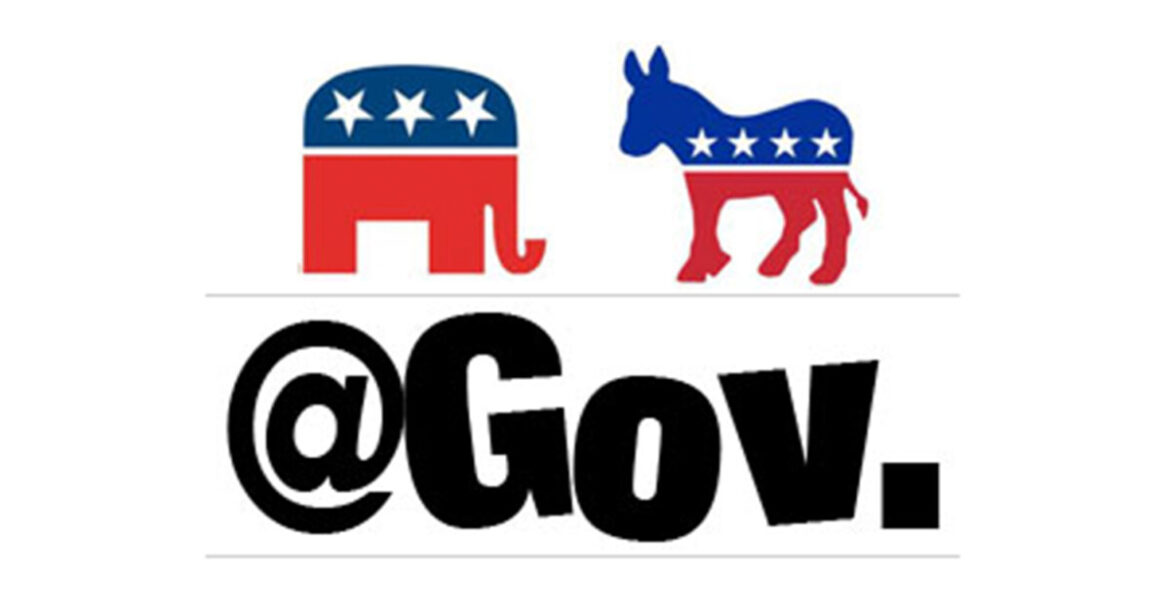Ryan Boulanger, News Editor
@Ryanbcourant
Let’s face it: The 118th Congress has been the least productive congressional assembly in American history. In the last decade, government shutdowns have grown longer and more invasive to the American public due to political polarization. “Gridlock” seems to be the natural term used to characterize our modern political landscape.
Following the election of Barack Obama in 2008, a constitutional mechanism known as the filibuster came into prime-time use. The filibuster has been around since the early 1800s, however it has seen little usage due to a majority agreement that compromise trumps disagreement. I don’t want to call names, but to get my point across I need to address the main proponents of the filibuster following Obama’s election: the Republican party. Obama’s Affordable Care Act, a massive legislative package, was largely struck down by the Republicans. With roots going back to FDR’s New Deal, the ACA was intended to usher in a new welfare state for the American people. The Republicans, whose fundamental ideology calls for limited government and an inherently limited welfare state, naturally opposed this legislation. Again, I’m not here to take sides on the ACA, however it is a perfect example of bloc-based disruption of progress. Instead of compromise, or debate, the Republican bloc exercised its right to a filibuster, which I won’t get into the nitty-gritty details of (that’s for another day), which essentially means they blocked a vote altogether. Another great example of this was in 1957, when Democratic senator Strom Thurmond stalled for an almost impressive 24 hours, blocking a vote on the Civil Rights Act. In photos of him after the feat, sweat can be seen gleaming on his forehead. (The lengths people will go to for their political faction!) In this case, it only took a handful of southern Democratic senators to effectively block the bill.
The Reality
History, American history in particular, tells us that political factioning is an inevitable feature of an operating democracy. George Washington warned against the formation of partisan factions in his farewell address, however America’s democratic adolescence had disillusioned him with a vision of harmonious political cooperation. The Oxford Dictionary defines the word “politics” as “the debate or conflict among individuals or parties having or hoping to achieve power.” I’m no cynicist, however the presence of truly like-minded individuals seems improbable.
Imagine a dinner party. All of your friends are there, the one who tells the funny stories, the one who raids your fridge, and the one who displays improper table manners. It’s truly a “party” due to the presence of multiple, unique friends, with multiple, unique perspectives. If chatter about the upcoming election arises each friend will be able to provide their own, unique conviction and analysis.
Now imagine the Australian Parliament. By no means is the institution perfect, quarrel is frequent and loud, and controversy arises daily. But just by taking a glance at the party breakup chart, it is imperative that many different factions are represented.
For comparison, here is a party breakup of the United States Senate:
Notice the difference? Far fewer ideologies are represented. Based on the anecdotal evidence presented earlier, it is logical to conclude that the presence of less political factions leads to an increased gridlock in policy-making.
The Solution
So what’s the difference between the Australian Parliament and United States Senate? The simple answer: voting. The United States currently uses a system known as First-Past-The-Post voting (FPTP). In this system each person in each district votes for a ONE candidate (whether it be a presidential, house, or senate race), and the candidate with the district plurality is voted for by that district in a winner-takes-all system. Why does this matter? Due to the nature of the winner-take-all system, voters are more likely to select majority-party candidates so as to not “waste” their vote on third party candidates. This leads to a two-party super dominance in the American political landscape. This is evidenced in the fact that the most successful third party candidate to ever run for president was Ross Perot, who did end up receiving an impressive 19% of the popular vote, but failed to win any electoral votes due to the winner-take-all system for each district in each state.
Australia, on the other hand, utilizes Preferential Voting. In this system Australians rank EVERY parliamentary candidate in their district in a ranked fashion. There are several nuances to this, and in some cases not all candidates are voted for. Nonetheless, a party breakup of the Parliament is indicative of a fully representative democracy:
It is important to note that voting is compulsory in Australia for citizens over the age of 18, however by instituting a method in which multiple candidates are voted for, the burden of selecting just one candidate is lessened, making citizens less fearful of voting in general.
According to Freedom House country profiles, Australia outranks the United States by a margin of 6 points in the Political Rights category (America scored 33/40 while Australia scored 39/40). The Political Rights score is awarded based on citizen faith in electoral processes. Australia also consistently ranks amongst the top countries for Civic Engagement according to International Comparisons. Additionally, Freedom House ranks Australia 12 points higher in overall freedom score (95 to 83). Comparatively, America outranks Brazil by 11 points.
Another voting system to consider is Proportional Representation (PR). Under PR, citizens vote for registered parties, and parties who meet a minimum “threshold” set by an electoral commission may seat a candidate. If a party meets double the threshold it seats two candidates, and so on. Denmark, which is ranked with a score of 97 on Freedom House, and has a perfect 40/40 score in the Political Rights category utilizes PR.
Alternative voting systems are already being experimented with in America. For instance, Maine uses Ranked Choice Voting (RCV), in which voters “rank” multiple candidates. This also helps less popularly-affiliated candidates gain representation in major races. Several major cities in the U.S. have also transitioned to RCV voting by popular demand.
Takeaways
Implementing an alternative voting system in America would contribute to an active breakup of the current two party super dominance, leading to the less frequent occurrence of major filibusters and more effective policy-making. In addition, by breaking up two party dominance America could work towards fragmenting Super PACs and lobbyist groups. Lobbyists groups in particular siphon considerable strength by relying on support from major parties. By weakening the influence of these interest groups America can transition towards a freer, more sovereign, and stronger policy-making power that isn’t held back by corporatism.
Although a broad-coalition government may seem hard to appeal to when crafting legislation, a collection of diverse voices will help effectively represent the interests of voters. By decreasing the influence of large donors in the U.S., Americans will likely receive candidates that are more sincere and more willing to seek compromise. One of the major reasons why Americans are faced with two presidential candidates that are extremely unpopular is due to Super PAC influence. According to Politico, the pro-Biden PAC Future Forward collected $208 million for Biden’s 2024 campaign. Groups such as Future Forward have calculated control over the passage of legislation such as Biden’s Inflation Reduction Act. America’s politicians shouldn’t operate at the whims of large donors. By giving smaller candidates more representation, and breaking up large party interest groups, Americans will likely be far more satisfied with both the legitimacy of electoral processes, and the candidates that represent them.




